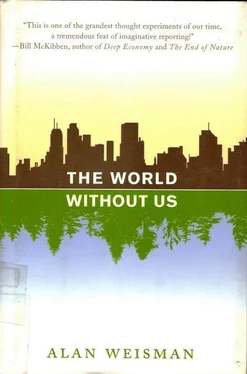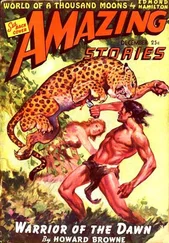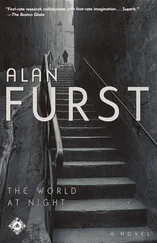During courtship, male Attwater’s prairie chickens inflate vivid, balloon-like golden sacs on either side of their necks. The impressed females respond by laying a lot of eggs. In a world without humans, however, it’s questionable whether the breed will be able to survive. Oil industry apparatus isn’t all that has spread across their habitat. The grassland here once ran clear to Louisiana with hardly a tree, the tallest thing on the horizon being an occasional grazing buffalo. That changed around 1900 with the coincidental arrival of both petroleum and the Chinese tallow tree.
Back in China, this formerly cold-weather species coated its seeds with harvestable quantities of wax to guard against winter. Once it was brought to the balmy American South as an agricultural crop, it noticed there was no need to do that. In a textbook display of sudden evolutionary adaptation, it stopped making weatherproof wax and put its energy into producing more seeds.
Today, wherever there isn’t a petrochemical stack along the Ship Channel, there’s a Chinese tallow tree. Houston’s longleaf pines are long gone, overwhelmed by the Chinese interloper, its rhomboid leaves turning ruby red each fall in atavistic memory of chilly Canton. The only way The Nature Conservancy keeps them from shading out and shoving aside the bluestem and sunflowers of its prairie is with careful annual burning to keep the prairie chicken mating fields intact. Without people to maintain that artificial wilderness, only an occasional exploding old petroleum tank might beat back the botanical Asian invasion.
If, in the immediate aftermath of Homo sapiens petrolerus , the tanks and towers of the Texas petrochemical patch all detonated together in one spectacular roar, after the oily smoke cleared, there would remain melted roads, twisted pipe, crumpled sheathing, and crumbled concrete. White-hot incandescence would have jump-started the corrosion of scrap metals in the salt air, and the polymer chains in hydrocarbon residues would likewise have cracked into smaller, more digestible lengths, hastening biodegradation. Despite the expelled toxins, the soils would also be enriched with burnt carbon, and after a year of rains switchgrass would be growing. A few hardy wildflowers would appear. Gradually, life would resume.
Or, if the faith of Valero Energy’s Fred Newhouse in system safeguards proves warranted—or if the departing oilmen’s last loyal act is to depressurize towers and bank the fires—the disappearance of Texas’s world champion petroleum infrastructure will proceed more slowly. During the first few years, the paint that slows corrosion will go. Over the next two decades, all the storage tanks will exceed their life spans. Soil moisture, rain, salt, and Texas wind will loosen their grip until they leak. Any heavy crude will have hardened by then; weather will crack it, and bugs will eventually eat it.
What liquid fuels that haven’t already evaporated will soak into the ground. When they hit the water table, they’ll float on top because oil is lighter than water. Microbes will find them, realize that they were once only plant life, too, and gradually adapt to eat them. Armadillos will return to burrow in the cleansed soil, among the rotting remains of buried pipe.
Unattended oil drums, pumps, pipes, towers, valves, and bolts will deteriorate at the weakest points, their joints. “Flanges, rivets,” says Fred Newhouse. “There are a jillion in a refinery.” Until they go, collapsing the metal walls, pigeons that already love to nest atop refinery towers will speed the corruption of carbon steel with their guano, and rattlesnakes will nest in the vacant structures below. As beavers dam the streams that trickle into Galveston Bay, some areas will flood. Houston is generally too warm for a freeze-thaw cycle, but its deltaic clay soils undergo formidable swell-shrink bouts as rains come and go. With no more foundation repairmen to shore up the cracks, in less than a century downtown buildings will start leaning.
During that same time, the Ship Channel will have silted back into its former Buffalo Bayou self. Over the next millennium, it and the other old Brazos channels will periodically fill, flood, undermine the shopping malls, car dealerships, and entrance ramps—and, building by tall building, bring down Houston’s skyline.
As for the Brazos itself: Today, 20 miles down the coast from Texas City, just below Galveston Island and just past the venomous plumes rising from Chocolate Bayou, the Brazos de Dios (“Arms of God”) River wanders around a pair of marshy national wildlife refuges, drops an island’s worth of silt, and joins the Gulf of Mexico. For thousands of years, it has shared a delta, and sometimes a mouth, with the Colorado and the San Bernard rivers. Their channels have interbraided so often that the correct answer to which is which is temporary at best.
Much of the surrounding land, barely three feet above sea level, is dense canebrake and old bottomland forest stands of live oaks, ashes, elms, and native pecans, spared years ago by sugarcane plantations for cattle shade. “Old” here means only a century or two, because clay soils repel root penetration, so that mature trees tend to list until the next hurricane knocks them over. Hung with wild grapevines and beards of Spanish moss, these woods are seldom visited by humans, who are dissuaded by poison ivy and black snakes, and also by golden orb weaver spiders big as a human hand, which string viscous webs the size of small trampolines between tree trunks. There are enough mosquitoes to belie any notion that their survival would be threatened when evolving microbes finally bring down the world’s mountain ranges of scrap tires.
As a result, these neglected woods are inviting habitats for cuckoos, woodpeckers, and wading birds such as ibises, sandhill cranes, and roseate spoonbills. Cottontail and marsh rabbits attract barn owls and bald eagles, and each spring thousands of returning passerine birds, including scarlet and summer tanagers in fabulous breeding plumage, flop into these trees after a long gulf crossing.
The deep clays below their perches accumulated back when the Brazos flooded—back before a dozen dams and diversions and a pair of canals siphoned its water to Galveston and Texas City. But it will flood again. Un-tended dams silt up fast. Within a century without humans, the Brazos will spill over all of them, one by one.
It may not even have to wait that long. Not only is the Gulf of Mexico, whose water is even warmer than the ocean’s, creeping inland, but all along the Texas coast for the past century, the ground has been lowered to receive it. When oil, gas, or groundwater is pumped from beneath the surface, land settles into the space it occupied. Subsidence has lowered parts of Galveston 10 feet. An upscale subdivision in Baytown, north of Texas City, dropped so low that it drowned during Hurricane Alicia in 1983 and is now a wetlands nature preserve. Little of the Gulf Coast is more than three feet above sea level, and parts of Houston actually dip below it.
Lower the land, raise the seas, add hurricanes far stronger than midsize, Category 3 Alicia, and even before its dams go, the Brazos gets to do again what it did for 80,000 years: like its sister to the east, the Mississippi, it will flood its entire delta, starting up where the prairie ends. Flood the enormous city that oil built, all the way down to the coast. Swallow the San Bernard and overlap the Colorado, fanning a sheet of water across hundreds of miles of coastline. Galveston Island’s 17-foot seawall won’t be much help. Petroleum tanks along the Ship Channel will be submerged; flare towers, catalytic crackers, and fractionating columns, like downtown Houston buildings, will poke out of brackish floodwaters, their foundations rotting while they wait for the waters to recede.
Читать дальше











